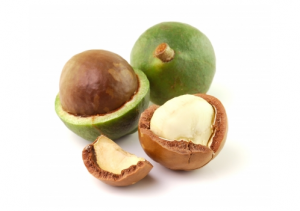For three years now, researchers from the University of Sydney – architecture and engineering experts – have been working on developing a new project that leverages additive manufacturing technology to create sustainable microtimber out of discarded macadamia nut shells.

The macadamia nut is indigenous to Australia and is considered one of the more valuable of nut species.
The research team focused on the properties of the macadamia shells as a way to 3D print a new type of timber.
According to Dr Sandra Löschke, Director of Architecture, Design and Technology and co-leader of the research team, the groundbreaking work lies in the micro-layering and fusing of different 3D-printed timber compositions, to provide a unique material and geometric gradient suitable for large-scale building projects.
“We want to create innovative, environmentally-resilient panels that are customised to react optimally to structural stress and weather exposure of a building. We aim to not only provide sustainable but aesthetic alternatives to standard timber products. The aim is to establish scientifically-informed design principles for materially-graded elements, which will help industry meet cutting-edge demands in construction in the future. This will be made possible by bringing together a team of multi-disciplinary experts from across the University,” said Dr Löschke.
The team aims to produce prototypes for a sustainable and highly marketable Microtimber, which may be adapted for a wide range of building features such as walls, cladding, internal screens or louvres.
The project will advance previous research into 3D printing techniques by co-leader Professor Andy Dong, Warren Centre Chair for Engineering Innovation at the University of Sydney.
“Timber is an important primary industry for Australia. Architectural and structural design aspirations are driving innovations in new value-added timber products, including the conversion of so-called waste material into a bespoke product. The anticipated outcomes of the research are highly significant for the forestry industry. It could fundamentally change the way Australia produces timber-based products,” said Professor Dong.
The project was partially funded by the Forestry and Wood Products Association.




















